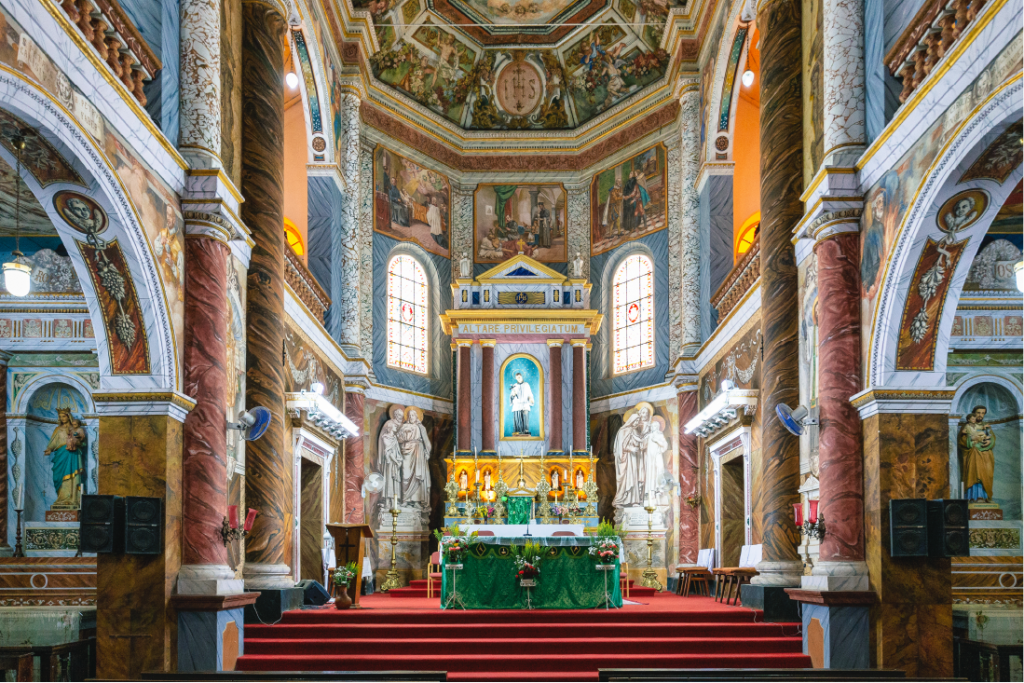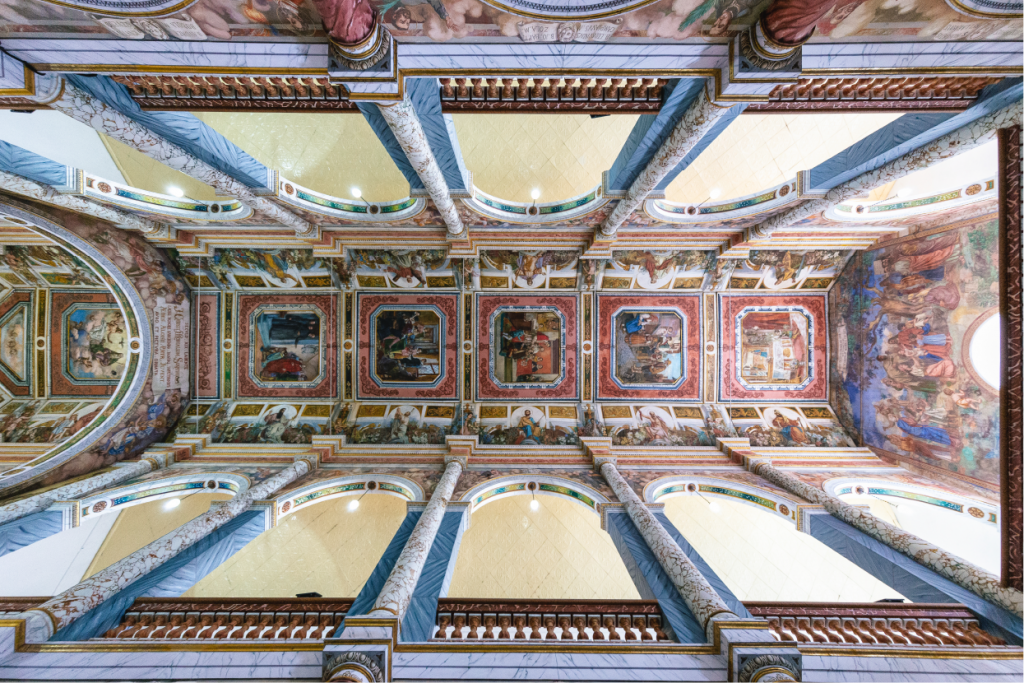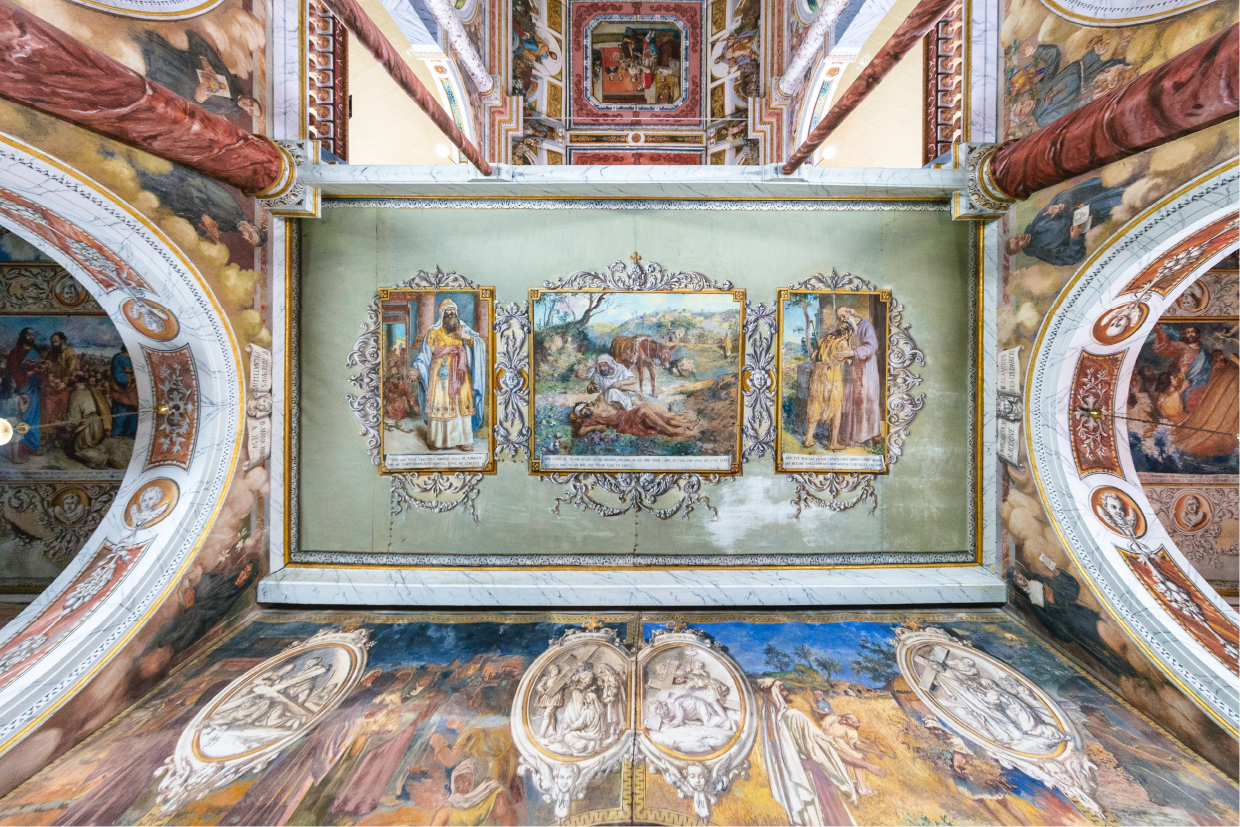My first recollection of the St Aloysius Chapel in Mangaluru is as a toddler, having landed on the floor from staring upwards at the hand-painted frescoes across the walls, and canvases on the high ceiling. The chapel is a landmark structure — designed to resemble the Sistine Chapel in Rome — within the renowned educational institute St Aloysius College (Autonomous), Mangaluru.
Across the generations of my family who studied here, we shared similar stories of the chapel. As for my friends, the serenity of the chapel is what we sought when overwhelmed — irrespective of the faiths we followed.
The marvellous paintings across the chapel, which was built in 1885, were made by Antonio Moscheni, an Italian Jesuit brother. He trained at the famed art academy Accademia Carrara in Bergamo, Italy, and later studied the paintings of the Vatican. The Jesuit order did not want to bury his talents, and sent him to paint churches in Italy, Albania and Yugoslavia. He finally arrived in Mangaluru in 1898, where he painted the St Aloysius Chapel in 1899. Moscheni’s work can be seen across the nave of the chapel, its ceiling, and the upper and lower arches.

In just over two years, he completed 600 square metres of frescoes, and 400 square metres of oil paintings on canvases. Since there were no locally available paints then, and importing them from Europe was not a viable option, Moscheni used dried powder pigments combined with pure water on freshly applied lime plaster for the frescoes. For the canvases, he used linseed oil mixed with dried powder pigments.
Look up from the centre of the nave and you see the early life of St Aloysius Gonzaga — to whom the chapel is dedicated — in the first three panels. The wall behind the altar continues the rest of his life. On the slopes that lead up to the ceiling are paintings of Jesus’ 12 apostles. Stringing these paintings together are floral garlands — no two are the same, I realise on closer inspection — with life-size angels holding them. The first panel on the left here is of St Peter, who is believed to have repented the morning after denying Jesus as his master, when the cock crowed. Look for the glint in the eye of the cock at his feet to appreciate the detailing. Elsewhere, a painting of the famed wedding in Cana, where Jesus turns water to wine, has the six pitchers show a blending of blue and red to depict this transformation — another testament to Moscheni’s attention to detail.

The largest painting in the chapel is on the rear wall, which depicts Jesus as a friend of children, and is considered Moscheni’s masterpiece. I noticed a small patch right below the half-seated woman, slightly dissimilar to the rest of the painting — interestingly, it was left untouched during the 1991–94 restoration by the INTACH ICI of Lucknow. The next round of conservation for the paintings took place only around 23 years later, in November 2017.
Moscheni also left his mark in other parts of India — he painted at the Santa Cruz Cathedral Basilica in Kochi and the Cathedral of the Holy Name in Mumbai. His legacy continues to awe. When I took my daughter, as a toddler, to the chapel for the first time, she gazed up at the paintings, leaning back to look right up to the ceiling, perhaps wondering, “Did someone really paint all this by himself?!”
Find your way to the St Aloysius Chapel in Mangaluru via Google Maps here.
Our selection of stays across India, best visited for their design and style. Check in
Ruth Dsouza Prabhu is a Bengaluru-based independent features journalist and food writer who is always on the lookout for stories she can deep dive into. She is on Instagram and Twitter at @TheRDPLife.
Pritham Dsouza is a musician-turned-farmer-turned-photographer whose career with the camera spans two decades. He is on Instagram at @the.metal.farmer.







